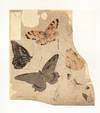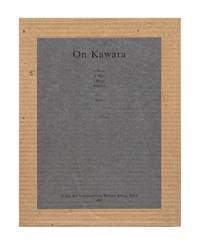by INSECTS
[Japan]: 19th century.
This is a beautiful collection of 174 nineteenth-century paintings of insects, apparently all by the same skilled artist or artists of the same school, recently mounted in modern archival folders. The artist was clearly inspired by and indebted to Tanshu Kurimoto (1756-1834), the artist and compiler of the famous Risshi Senchufu [1000 Insects Picture Book], completed in 1805. Indeed, several images are direct copies. Some of the sheets have dates, ranging from 1804 to the Meiji period; the earlier dates refer to images created by previous artists. Several of the drawings are copies from illustrations of natural history (truncated)
This is a beautiful collection of 174 nineteenth-century paintings of insects, apparently all by the same skilled artist or artists of the same school, recently mounted in modern archival folders. The artist was clearly inspired by and indebted to Tanshu Kurimoto (1756-1834), the artist and compiler of the famous Risshi Senchufu [1000 Insects Picture Book], completed in 1805. Indeed, several images are direct copies. Some of the sheets have dates, ranging from 1804 to the Meiji period; the earlier dates refer to images created by previous artists. Several of the drawings are copies from illustrations of natural history (truncated)












